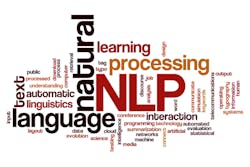Atrius Health Finding High-Value Use Cases for Natural Language Processing
Natural language processing (NLP) has the potential to help plug information gaps by unlocking the value in unstructured data. But health systems are still figuring out which use cases to apply it to. “Our goal has to been to figure out how put it in production to reliably improve patient care outside of a research study or one-off project,” said Craig Monsen, M.D., medical director of analytics and reporting at Atrius Health.
Atrius is a large integrated multispecialty practices with 900 physicians in eastern Massachusetts. It has approximately $1.9 billion in annual revenue, with 70 percent from full-risk contracts.
In a recent webinar presentation, Joe Kimura, M.D., Atrius’ chief medical officer, stated that informatics and NLP are going to be part of the core competencies for a value-based care organization going forward. Because the organization has accepted responsibility for engaging patients proactively, clinical care is oriented around prevention and moving upstream in the clinical care pathway, he added.
I asked Dr. Monsen to elaborate on why Atrius sees NLP playing a key role in its value-based journey.
“We all know from our attempts to improve healthcare quality that there are care gaps,” he said, such as patients not getting medications they need or screenings recommended by guideline authorities. “From a clinical perspective, it is frustrating that what appear to be care gaps are actually information gaps.”
He used the example of identifying congestive heart failure patients with low heart pump function, who should be on medications. “One challenge is if I know my patient has good pump function and shouldn’t be on these medications, but that is not captured in structured information; it is in my notes,” he said. “The challenge is either asking me to double-document and enter it into a structured field, or find a way to capture from my note that a certain quality measure or bundle of care does not apply here.”
At Atrius, quality metric reporting is a centralized function for the 900 physicians across 30 practice locations. Using the same example of ejection fraction or heart pump function, Monsen noted that the data exists in unstructured data within echo reports. “The reason that is relevant is that there is a bundle of care you would want to provide patients with heart failure and also evidence of low pump function,” he said. If they do have low pump function, you would want to make sure that care gap was closed. Atrias has worked with vendor Linguamatics to construct an NLP query that runs over all the unstructured echo reports it has pulled. The output is a roster of patients and what their pump function is. “We can sort them by pump function, and identify patients who would quality for the metric.”
Atrius can also use that information to work with physicians to make sure the problem list is accurate, because other things downstream such as risk adjustment depends on the accuracy of that problem list.
Another use case for NLP developed at Atrius creates a “safety net” for patients. Here is an example Monsen gave: It has streams of data, which are in unstructured format, such as radiology notes. A few of those might say a patient has pulmonary nodules. They are frequently not dangerous themselves but can be a sign of something that develops into cancer. Typically those require follow-up imaging. If you don’t do that imagng, it is possible you could be missing what could be cancer. “Although there are guidelines about how frequently you follow up, the reality is that there is so much data that it is an untenable burden to expect a single primary care physician or care team to be able to totally digest all the information coming in,” he said. “The way I think about NLP is essentially to be another member of the care team and provide that ata oversight,” Monsen said.
An NLP query can be done on the data warehouse to look for pulmonary nodules that haven’t had the follow-up imaging that guidelines suggest. Monsen used the term “augmented intelligence” to describe how the NLP can search through all the unstructured data quickly and reliably looking for those information gaps and assisting care teams.
Looking ahead, Monsen said behavioral health and social determinants of health look like other opportunity areas for NLP. “Those are conventionally not captured as well from administrative or structured data but nonetheless drive a lot of care.” If a patient can’t get to an appointment because they can’t afford a bus pass, there is no place to put that in the EHR. “There are nuance and advantage to the narrative form, so the question becomes how can we use NLP to extract those concepts that are important but not captured in a structured way.”


